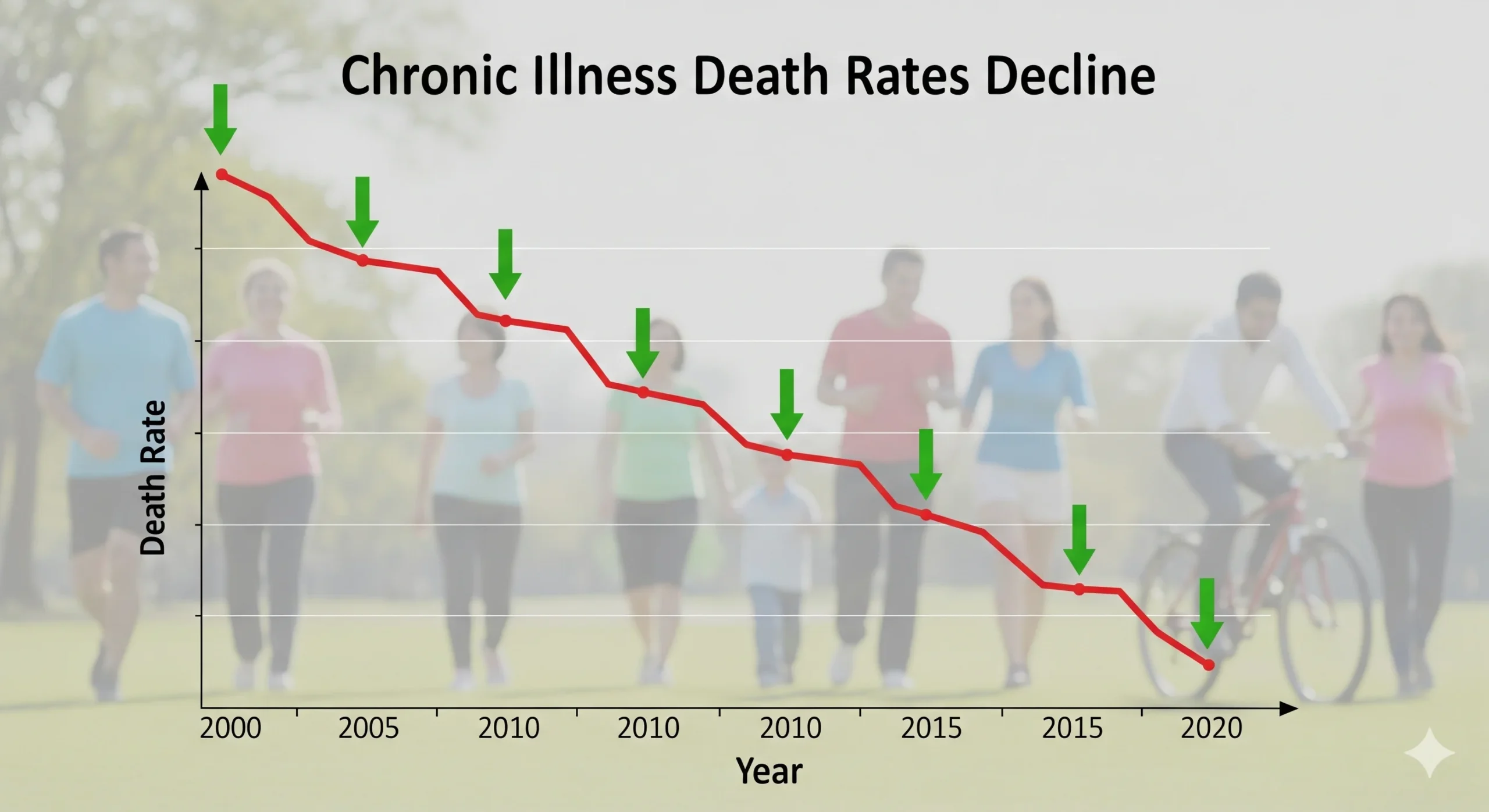Chronic Disease Mortality: Progress and the Looming Challenges
The global battle against chronic diseases, including heart disease, cancer, and diabetes, has seen significant advancements over the past decade. While death rates from these conditions have decreased in the majority of countries, the rate of progress is slowing, signaling a critical need for renewed focus and investment. This article delves into the recent findings, the implications for global health, and the crucial steps needed to maintain and accelerate the fight against these pervasive illnesses.
The Global Landscape of Chronic Disease Mortality
Recent data reveals a mixed picture of progress in the fight against chronic diseases. A comprehensive analysis, based on research from Imperial College London and published in The Lancet, indicates that mortality rates from chronic diseases have fallen in approximately 80% of countries worldwide. This is a testament to the efforts of global health initiatives and the advancements in medical treatments and preventative measures. However, a closer look reveals a concerning trend: the pace of decline is slowing in many regions.

The Slowdown in Progress: A Cause for Concern
Despite the overall positive trend, almost two-thirds of countries experienced a slowdown in the reduction of mortality rates from 2010 to 2019, compared to the previous decade. This deceleration is particularly evident in high-income countries, including much of Europe, North America, Australasia, and the Pacific. The United States, for example, demonstrated the smallest decrease in risk among high-income nations during this period. This slowdown highlights the complexities of tackling chronic diseases and underscores the need for a reevaluation of existing strategies. Perhaps this is related to an increase in unhealthy food environments that impact children’s health as outlined in this article: Childhood Obesity Crisis: How Unhealthy Food is Impacting Our Children’s Health
Factors Contributing to the Slowdown
Several factors contribute to the deceleration in the reduction of chronic disease mortality. These include:
- Aging Populations: As populations age, the prevalence of chronic diseases naturally increases, making it more challenging to achieve significant reductions in mortality rates.
- Rising Risk Factors: The prevalence of risk factors such as obesity, smoking, and sedentary lifestyles continues to rise in many parts of the world. Childhood Obesity Crisis: Why More Kids Are Obese Than Underweight Now explores this important area.
- Healthcare System Strain: Healthcare systems in many countries are under strain, with limited resources and capacity to manage the growing burden of chronic diseases effectively.
- Inequities in Access: Disparities in access to healthcare and preventative services persist, leading to unequal outcomes for different populations.
- Emergence of New Diseases: the rise of novel diseases and their long term impact can impact these metrics.
The Impact of Chronic Diseases on Individuals and Societies
Chronic diseases have a devastating impact on individuals, families, and societies. They are a leading cause of disability and premature death, significantly affecting quality of life. The economic consequences are also substantial, with high healthcare costs, lost productivity, and the burden of informal caregiving. In fact, the stress of dealing with these ailments can directly impact your mental well-being. Consider this article: Boost Your Mental Well-being: 3 Science-Backed Habits for Young Adults. Addressing these issues is a fundamental aspect of overall well-being.
Strengthening Prevention Strategies
Preventing chronic diseases is paramount. Effective strategies include:
- Promoting Healthy Lifestyles: Encouraging healthy diets, regular physical activity, and avoiding tobacco use. For instance, the article Unleash Your Health: The Ultimate Guide to the Amazing Benefits of Outdoor Exercise offers good tips on this front.
- Early Detection and Screening: Implementing screening programs to identify and manage risk factors and diseases early.
- Public Health Campaigns: Launching campaigns to raise awareness about the risks of chronic diseases and promote healthy behaviors.
- Creating Supportive Environments: Creating environments that support healthy choices, such as improving food environments, providing safe spaces for exercise, and regulating harmful substances.
Improving Treatment and Care
Enhancing the quality of treatment and care is crucial for managing chronic diseases:
- Improving Access to Healthcare: Ensuring access to affordable and quality healthcare services for all, including primary care, specialist care, and essential medicines.
- Strengthening Healthcare Systems: Investing in healthcare infrastructure, training healthcare professionals, and integrating chronic disease management into primary care.
- Promoting Patient Education: Empowering patients with the knowledge and skills they need to manage their conditions effectively.
- Developing New Therapies: Investing in research and development of new treatments and technologies for chronic diseases.
The Role of Data and Monitoring
Data collection and monitoring are vital for tracking progress and informing effective policies:
- Strengthening Surveillance Systems: Improving systems for collecting data on chronic disease prevalence, risk factors, and mortality.
- Using Data for Decision-Making: Utilizing data to identify trends, evaluate interventions, and make evidence-based decisions.
- Sharing Data and Best Practices: Promoting the sharing of data and best practices among countries and healthcare providers.
- Leveraging Technology: Harnessing technology, such as AI and digital health tools, to improve data collection, analysis, and patient care. Perhaps the field of medicine will turn to AI solutions such as those outlined here: AI in Drug Discovery: Challenges and Triumphs in 2025 and Beyond
Investment and Collaboration: The Keys to Success
Achieving significant progress requires increased investment and collaboration at all levels:
- Increased Investment: Governments, international organizations, and the private sector must significantly increase investment in chronic disease prevention, treatment, and research.
- Global Collaboration: Fostering collaboration among countries, research institutions, and healthcare providers to share knowledge, resources, and best practices.
- Multisectoral Approaches: Promoting collaboration across sectors, including health, education, transportation, and urban planning, to create supportive environments for health.
- Community Engagement: Engaging communities in the design and implementation of chronic disease prevention and management programs.
The Path Forward: A Call to Action
The trends revealed in the latest analysis emphasize the urgency of addressing chronic diseases. By investing in preventative strategies, improving treatment and care, and leveraging data and collaboration, we can reverse the slowdown in progress and work towards a future where chronic diseases are less prevalent and less devastating. The upcoming UN General Assembly meeting presents a critical opportunity to prioritize chronic disease prevention and control, setting the stage for sustained action and tangible results.
Conclusion
The global fight against chronic diseases is at a crossroads. While there have been significant advances, the slowing pace of progress demands immediate and concerted action. By investing in prevention, strengthening healthcare systems, and fostering collaboration, we can ensure a healthier future for individuals and communities worldwide. It’s important to stay proactive in your approach. A great starting point is to begin with your physical activity. Read our article: Fitness After 40: The Ultimate Guide to Cardio and Strength Training.













1 comment